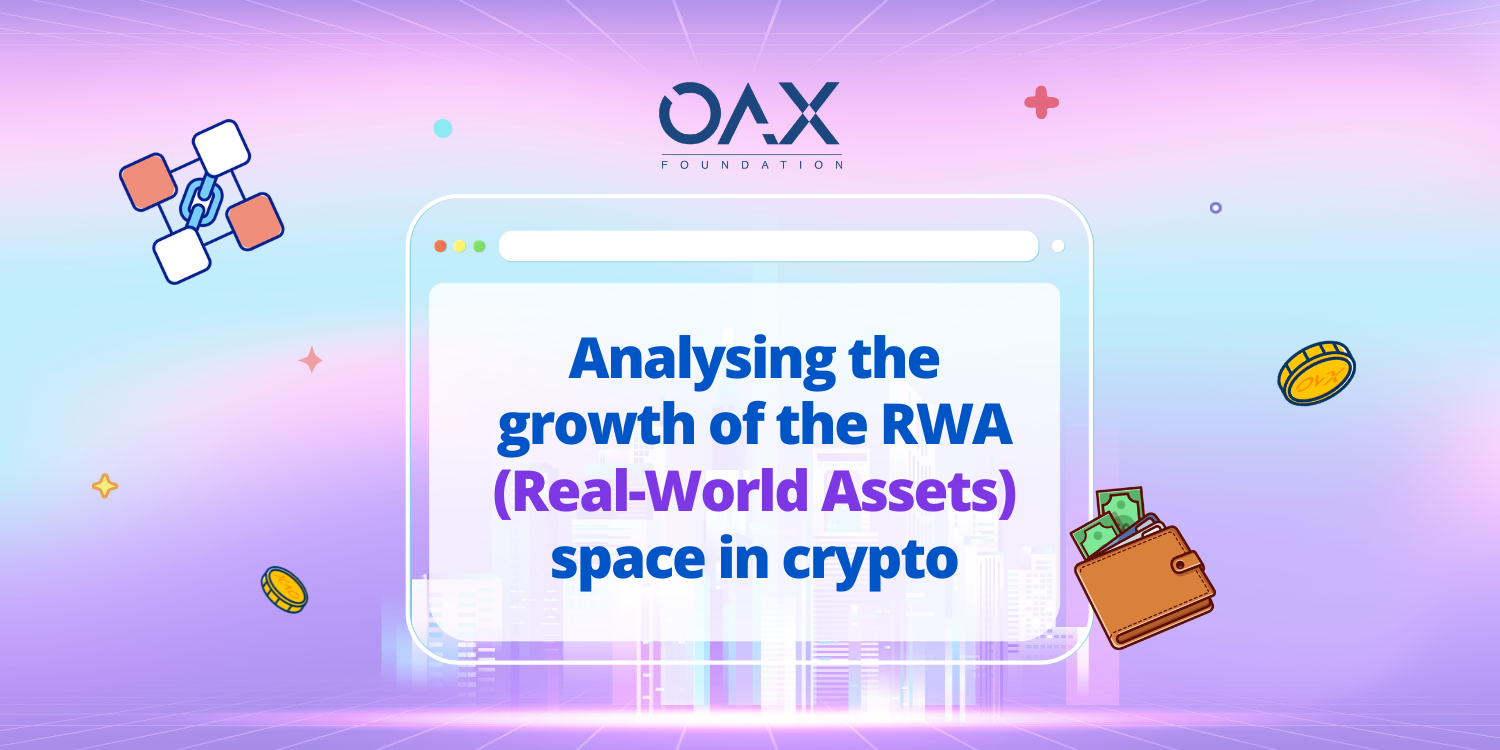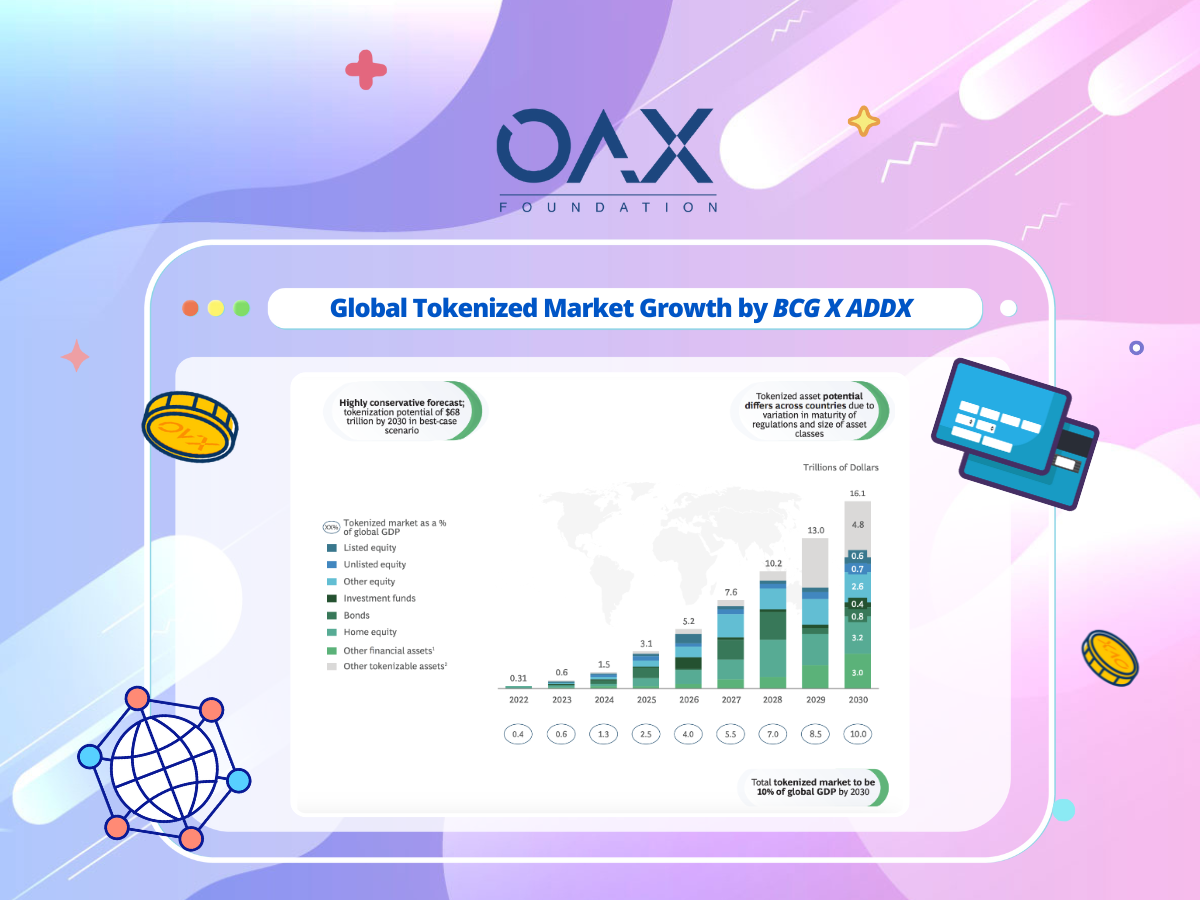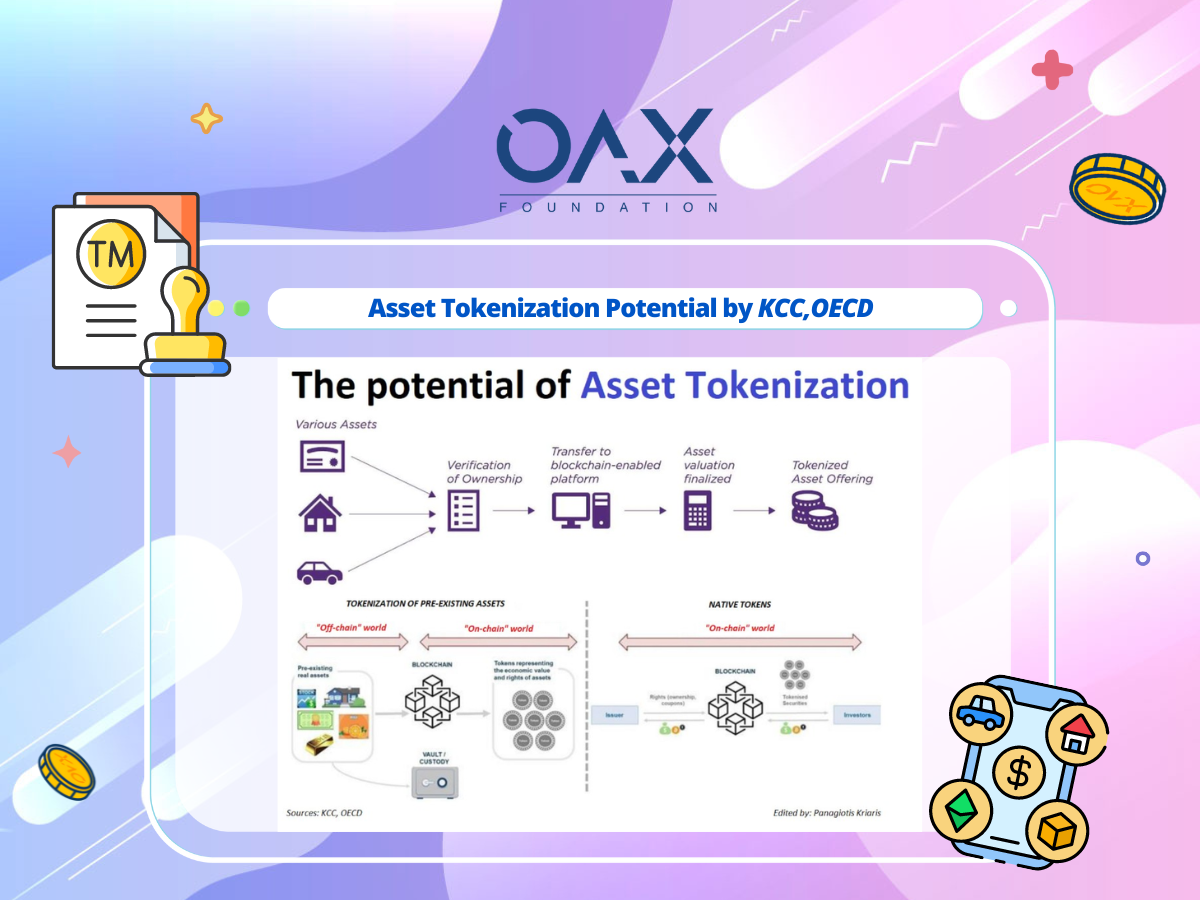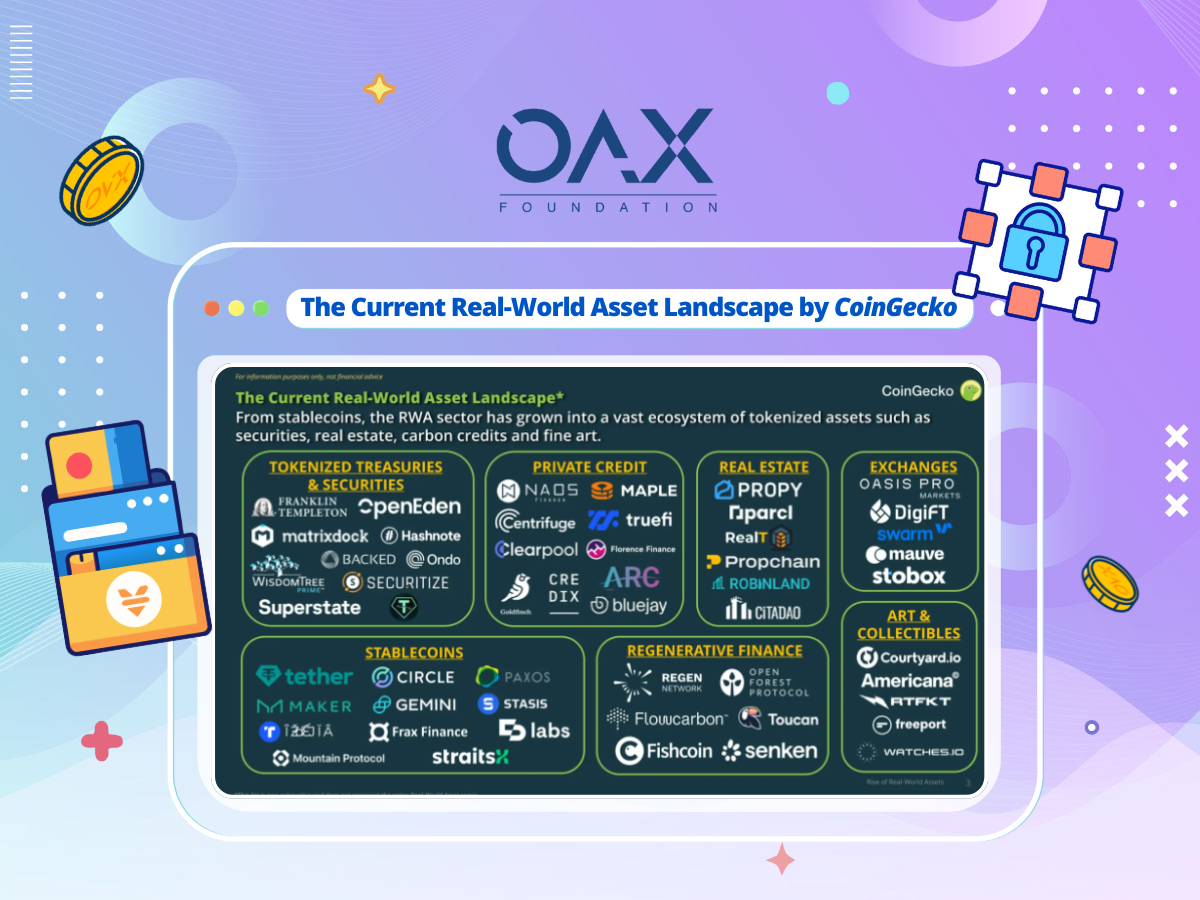
Real World Assets: Part One
Resurgence of the RWA sector
The OAX Foundation and industry experts are closely monitoring the growth and resurgence of real world assets (RWAs) within the decentralized finance (DeFi) space. With the total value locked (TVL) in RWAs grew from 2 billion to 6 billion over the past years shows this sector holds immense potential for transforming the financial landscape.

In this article, we explore the opportunities and challenges of RWAs as they bridge the gap between TradFi and DeFi, highlighting the digitization of tangible assets and the simplified processes they offer. Join us as we delve into the evolving world of RWAs, examining their market efficiencies, regulatory hurdles, and the exciting possibilities they bring to blockchain space.
What is RWA
RWAs encompass a wide range of assets, including tangible ones like real estate and gold, as well as intangible assets such as government bonds and carbon credits. To bring these assets into decentralized finance, they undergo a process called tokenization, where their monetary value is converted into digital tokens for representation and transactions on the blockchain.

This tokenization of real world assets offers new opportunities for liquidity and investment yield within the DeFi ecosystem, with the potential to mitigate the volatility associated with cryptocurrencies. There is also a growing interest in bringing traditional financial products, such as US Treasuries, onto the blockchain to provide low-risk investment options. By embracing RWAs, DeFi participants can access a novel asset class and unlock new avenues for generating yield.

Why is it ever more relevant?
By integrating RWAs into the decentralized market, liquidity is increased, transparency is improved, and overall market efficiency is enhanced. Moreover, RWAs have the potential to lower entry barriers, allowing individuals to participate in trading and earning with smaller amounts of capital.
RWAs can also serve as collateral for DeFi loans, with the loan being repaid as the underlying asset appreciates in value. This integration of real world assets brings convenience, eliminates counterparties and commissions, and simplifies and accelerates transactions within the blockchain ecosystem. While concerns exist regarding default risks and undercollateralized loans, the fixed income market dominates the real world asset space.
The fractionalization of real world assets in DeFi unlocks a world of investment possibilities, granting access to previously unattainable private credit investments for a broader investor base.
Challenges ahead
Despite the growth of the industry, the tokenization of RWAs is not without its challenges. Security concerns loom large, with regulatory compliance varying across jurisdictions, demanding adherence to local laws. The vulnerability of digital assets to fraud and hacking underscores the need for robust custody solutions and stringent security measures. Thorough third-party audits are essential to mitigate smart contract bugs and vulnerabilities. Balancing decentralized practices with offline measures, like KYC and AML procedures, becomes crucial for ensuring security. Furthermore, the flourishing of tokenized RWAs relies on the existence of market liquidity and demand.
Wrapping up
RWAs hold immense potential for the future of blockchain technology, enabling the digitization of assets like houses, cars, shares, and jewelry. This digitization simplifies processes such as buying, selling, sharing, and inheriting assets, revolutionizing the industry.
The OAX Foundation recognizes the pragmatic use cases for RWAs and remains positive about their space in the industry. By bringing real world assets onto the blockchain, decentralized finance can unlock unique opportunities and market efficiencies that may surpass traditional financial systems. As the TVL in RWAs continues to grow, it is evident that users are particularly interested in accessing off-chain sources of yield.
While RWAs have been an early use case, the sector is still in its nascent stage and faces regulatory challenges. As the technology matures, clear regulatory guidelines will be crucial for widespread adoption of RWAs, allowing the sector to reach its full potential in the future.
We have a part 2 of this series coming soon for a deeper dive into the ecosystem such as stUSD, Ondo and MakerDao, zooming into how it works and discussing the model’s sustainability, stay tuned.
Disclaimer: The above is an opinion piece written by an authorized author, but in no way represents the official standpoint of OAX Foundation Limited, nor should it be meant to serve as investment advice.


